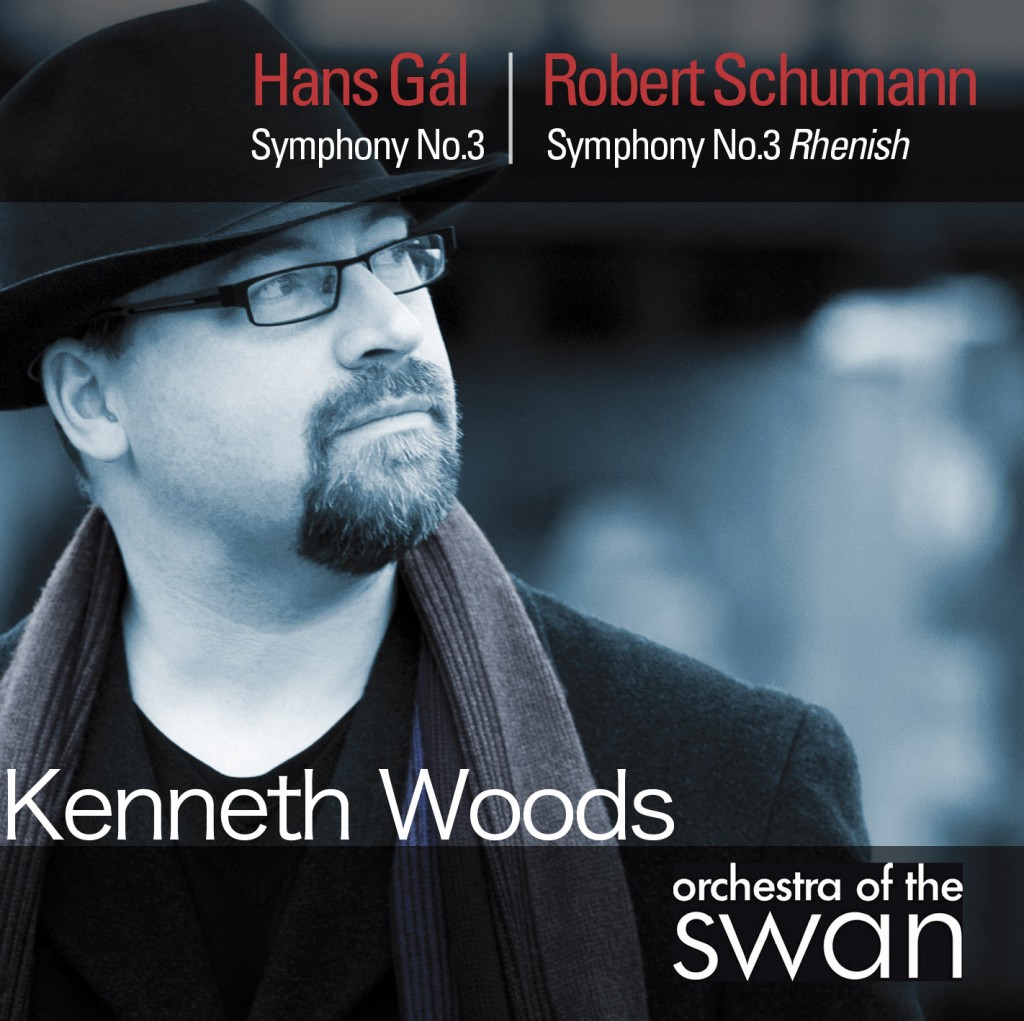Martin Anderson has a review of my upcoming release of Robert Schumann and Hans Gal’s Third Symphonies with Orchestra of the Swan at the website The Classical Review. Also reviewed is TZ’s recording with Northern Sinfonia of Gal 1 and Schubert 6. At the time of publication, it was/is The Classical Review’s “featured CD review.”
Gál’s Third – not quite 35 minutes in length – dates from 1951-52, by which time he was a firm feature of Edinburgh’s musical life. The first movement, almost a quarter-hour in length, opens with a pained Andantino cantilena on solo oboe which gradually expands over an increasingly emphatic bass line that never quite begins to tramp and which then gives ground to an Allegro vigorous e passionato which begins life as an intemperate waltz, the rest of the movement being constructed from the contrast, if not conflict, between these two elements. And just when you think the tension isn’t quite enough to sustain the scale, Gál gives the argument a tightening twist to point to potential violence not far below the surface.
The nine-minute second movement is marked Andante tranquillo e placido and again opens with a solo oboe, slowly unravelling the slowest, calmest of dances in a kind of becalmed ecstasy. In the finale, Allegro molto moderato, the emphasis is on the last of those three words: the movement trips gently forward as a dance-rhapsody, very slowly building up a head of tension; the means, singing treble lines over steady basses, look back to Bruckner and, not quite so far, to Franz Schmidt, a colleague of Gál’s in pre-Anschluss Vienna.
Woods’ Schumann Three seems to have taken a leaf from Gál’s melodiousness. The brass writing – especially that for the horns – and the rhythms can point interpretations in a quasi-militaristic direction, so that the faster movements take on a kind of epic, crusading quality; Woods prefers to round down the corners and emphasise the lyrical writing. Whereas Gál looks back to Bruckner, the ‘military’ Schumann looks forward to him; Woods’ …finds more poetry than usual, placing him more precisely in his own time: the links with Mendelssohn are thereby all the clearer. And all the more surprising, then, his lickety-split treatment of the last movement. I must admit that I prefer my Schumann harder-edged; de gustibus… A first recording shouldn’t be a swan-song, but Orchestra of the Swan really does sing for Woods, in long, arching melodic lines, Gál’s writing favouring the woodwinds especially.
(Emphases added)
Since the first couple of people who have seen the review have responded by asking what “de gustibus” means, I offer the following from Wikipedia (I was lucky enough to see an appalling production of The Seagull in London a few years ago, so I looked it up then)
De gustibus non est disputandum is a Latin maxim. It means “one must not dispute about tastes.”[1][2] The implication is that opinions about matters of taste are not objectively right or wrong, and hence that disagreements about matters of taste cannot be objectively resolved.
This phrase is famously misquoted in Act I of Anton Chekhov‘s play The Seagull. The character Shamrayev conflates it with the phrase de mortuis nil nisi bonum (in the alternate form: de mortuis, aut bene aut nihil – “of the dead, either [speak] good or [say] nothing”), resulting in “de gustibus aut bene, aut nihil”, “Let nothing be said of taste but what is good”.[3]
Readers may be interested to know that Anderson has an exceptionally long acquaintance with the music of Hans Gal, and knew the great man personally.
Though at the end of his long life (1809-1987) Gál may have feared his music had been superseded by fashion, he never had any doubts about its enduring quality and he would be pleased, but not surprised, that it is being discovered in a new age. I was fortunate enough to know him for his last few years. Shortly before his death, frustrated that no one more prominent was paying attention to him, I interviewed him, with the results you can read here. Of course, I wish I knew then what I knew now: my questions would have been at least a little better informed. Still, spilt milk and all that – the main thing is this further evidence of the Gál revival, with the complete piano music now available in two versions (Leon McCawley on Avie, Martin Jones on Nimbus), the four string quartets recorded by the Edinburgh Quartet on Meridian, and much more: go to hansgal.com and hit the ‘Recordings’ tab for more details.
Finally, Anderson compares the sonic qualities of both discs
Simon Fox’s recordings seem geared to reflect the two different approaches: the orchestral textures chez Zehetmair are immediate
and sharply contrasted; Woods’ are warm and rounded.
I’m happy, very happy, to be the warm and rounded guy.

Recent Comments